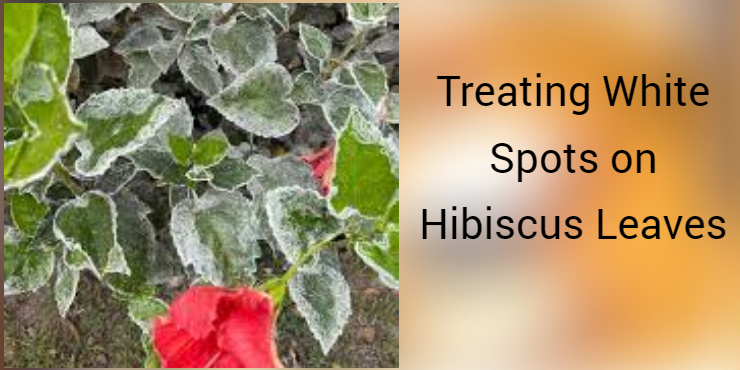Introduction
Hibiscus plants are loved for their beautiful and exotic blooms, but sometimes their leaves can develop white spots, which can be a sign of underlying issues that need attention. In this article, we will explore the causes, treatments, and preventive measures for white spots on hibiscus leaves to help you keep your plants healthy and thriving.
What Causes White Spots on Hibiscus Leaves?

Several factors can cause white spots on hibiscus leaves. Identifying the root cause is crucial for treatment.
- Dealing with Fungal Infections: Fungi such as powdery mildew and downy mildew can create white, powdery spots on hibiscus leaves. These infections thrive in humid conditions and can quickly spread if not addressed promptly.
- Dealing with Insect Infestations: Certain insects, such as whiteflies and aphids, feed on the sap of hibiscus plants. As a result, sticky residue is left behind, which can turn into white spots on the leaves.
- Sunburn: Hibiscus plants can be damaged by excessive sunlight, causing white spots due to sunburn.
- Mineral Deficiencies: A deficiency in magnesium and calcium can result in the appearance of white spots on leaves.
- Problems with Watering: Excessive watering can stress hibiscus plants, leading to white spots.
Treating White Spots on Hibiscus Leaves

Now that we’ve identified the possible causes, let’s explore how to treat white spots on hibiscus leaves:
1. Fungal Infections
To prevent the spread of the fungus, it is important to remove and dispose of leaves that have white spots. Use sterilized pruning tools to avoid further contamination. Additionally, applying a suitable fungicide, as per the manufacturer’s instructions, can help to combat the fungus. Be sure to thoroughly cover both sides of the leaves. To reduce humidity and promote air circulation around the hibiscus plant, trim surrounding vegetation.
2. Insect Infestations
Control whiteflies and aphids by using insecticidal soap or neem oil. Apply it to affected leaves as directed. Introduce natural predators like ladybugs, lacewings, or parasitic wasps to help control the pest population.
3. Sunburn
To protect your hibiscus plant from excessive heat, you can provide temporary shade during the hottest parts of the day using cloth or shade cloth. Additionally, if possible, you can relocate the plant to an area with filtered sunlight to minimize the risk of sunburn.
4. Mineral Deficiencies
Proper fertilization requires using a balanced, slow-release fertilizer with micronutrients, such as magnesium and calcium. It is important to follow the recommended application rates.
5. Watering Issues
Establish a regular watering schedule to keep the soil consistently moist but not waterlogged. If the soil is not draining well, consider repotting the hibiscus in a container with well-draining soil.
Frequently Asked Questions (FAQs)
Q1: Can I use homemade remedies to treat fungal infections on hibiscus leaves?
Yes, you can use homemade solutions like a mixture of baking soda and water or a milk-water mixture. These can be effective against some fungal infections.
Q2: How often should I apply fertilizers to prevent mineral deficiencies?
Fertilizers should be applied according to the package instructions, typically every 4-6 weeks during the growing season.
Q3: Is it necessary to quarantine infected hibiscus plants to prevent the spread of pests and diseases?
Yes, isolating infected plants can help prevent the spread of pests and diseases to healthy plants.
Conclusion
White spots on hibiscus leaves can be concerning, but with the right knowledge and prompt action, you can address the issue effectively. Identifying the underlying cause is the first step in providing the appropriate treatment. Regular monitoring, proper care, and preventive measures will help keep your hibiscus plants healthy and vibrant, ensuring they continue to grace your garden with their stunning blooms.


